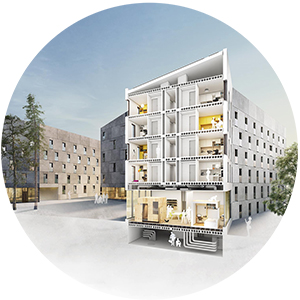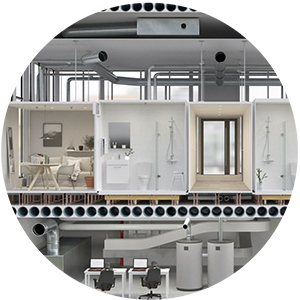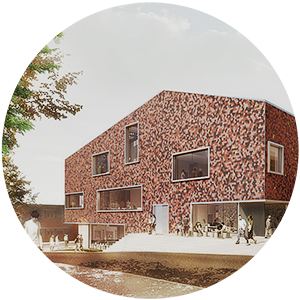Datasets For Education
As part of our project, 'Datasets for Education,' we offer data from buildings. The data is from our test beds, and can be used for teaching at KTH and other educational purposes.

Aims and Objectives
The project aims to identify and develop desirable datasets while also creating a framework for making other datasets available. This will enable easy and efficient access to data for use in education, lifelong learning, and further education courses. By doing so, students can enhance their digital skills, learn how to use digital tools effectively and contribute to achieving global sustainability goals and KTH’s sustainability objectives.
Project’s Datasets
The datasets provided can serve as case studies for courses that utilize data. To support these courses, a smaller incentive package is offered to clarify expectations and provide introductory lectures from KTH LIL. It also includes contributions to the exhibition/catalog, knowledge dissemination via the web, and information exchange at conferences and workshops.
The project aims to create digital experimental environments for teachers and students to develop innovative and sustainable engineering skills. The goal is to implement courses involving data from KTH in various ways at KTH LIL, such as the annual rebuilding of the innovation units in Testbed KTH, optimization of automation, or new services. This ensures that student work and knowledge are used directly to increase sustainable resource use and sustainable construction.
Action plan:
- Conduct interviews with teachers and researchers at KTH to determine which datasets are needed for different courses. The target audience is ITM, ABE, and EECS school teachers (course coordinators/examiners).
- Compile data requirements and prepare relevant datasets.
- Download, manage, and generate metadata for the datasets. Anonymize the data as needed.
- Make the datasets available on the KTH cloud service and KTH LIL website.
- If resources and time permit, develop a communication package that includes introductory lectures, data descriptions, and site visits.
- Design communication materials for teachers and course coordinators.
Refer to KTH Live-In Lab
If you use data from our Testbeds for research or projects that result in a paper, please make sure to reference KTH Live-In Lab.
The Testbeds
KTH Live-In Lab has three Testbeds that share a common database for research and education. The data is shared through our valuable data pool hosted on KTH's servers.
Testbed EM (Einar Mattsson)

The Testbed EM is comprised of three plus-energy buildings on KTH Campus Valhallavägen, which house 305 student apartments. Heat and hot water are generated using heat pumps connected to 12 boreholes, measuring a total length of 3600 meters. Additionally, the Testbed has around 1150 square meters of solar panels and 64 wastewater heat exchangers. To further enhance its energy storage capabilities, the Testbed is also be equipped with a 300 kWh battery energy storage system, in partnership with Northvolt. All apartments are equipped with systems to measure hot water, electricity, CO2, and light, and these can be controlled and monitored for research purposes.
You can access Testbed EM here: Download sample datasheets . Read the accompanying information about dataset structure.
Testbed KTH

The Testbed KTH is located in a building that is exempt from building permits. It is situated in one of Einar Mattsson's three plus-energy buildings on KTH Campus Valhallavägen. The total area of the premises is 305 square meters, comprising a living area of approximately 120 square meters, a technology space of around 150 square meters, and a project office of roughly 20 square meters. Testbed KTH constructs various apartment configurations on an annual basis, and KTH sublets them to students who have applied to live in the test apartments. The KTH Testbed is highly flexible concerning both geometry and installations. Additionally, it owns its solar panels and a borehole, enabling the collector to be changed. While Einar Mattsson rents the premises under a ten-year contract from 2017 to 2027, everything within the premises, including the apartments, substation, and office, is owned by KTH.
You can access Testbed KTH data here: Download sample datasheets . Read the accompanying information about dataset structure.

Testbed AH (Akademiska Hus)
The Testbed AH comprises of Undervisningshuset located at KTH Campus Valhallavägen and is fitted with numerous sensors. These sensors measure various values like ventilation flows, CO2 levels, electricity and water consumption, moisture levels, and movements in specific areas within the test bed.
You can access Testbed AH data here: Download sample datasheets . Read the accompanying information about dataset structure.
Access
To ensure we provide the most effective support, we investigate the needs of researchers and educators in the project context.
You can access data from Testbed AH, EM, and KTH here: Testbed Infrastructure . Please read the accompanying information about dataset structure.
